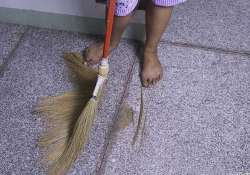Unbelievable yet true: Dust in the house can tell gender of occupants
New York: What story can the dust collected from your house tell? These organisms can indicate not just the geographical location of your residence, but also the proportion of male and female members in the

New York: What story can the dust collected from your house tell? These organisms can indicate not just the geographical location of your residence, but also the proportion of male and female members in the house, and can also reveal if you have a pet, says a new study.
The new findings highlight the impressive amount of microbial diversity in the average household.
"Every day, we are surrounded by a vast array of organisms in our homes, most of which we cannot see," said co-author of the study Noah Fierer, associate professor at the University of Colorado Boulder in the US.
"We live in a microbial zoo, and this study was an attempt to catalog that diversity," Fierer said.
The study examined roughly 1,200 homes across the US.
On average, each home contains more than 5,000 different species of bacteria and around 2,000 species of fungi.
Fungal communities tend to be more predictive of a home's location while bacterial communities provide clues about the identity of its residents.
"Geography is the best predictor of fungi in your home," Fierer noted.
When it comes to bacteria, however, where you live may be less important than whom you live with.
From the dust samples, researchers could confidently predict which homes had pets such as cats or dogs and, to a slightly lesser extent, the gender ratio of the residents.
The findings were published in the journal Proceedings of the Royal Society B.